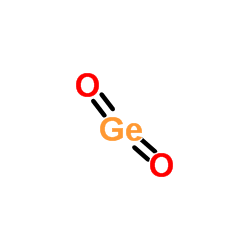| Structure | Name/CAS No. | Articles |
|---|---|---|
 |
Indium chloride
CAS:10025-82-8 |
|
 |
Germanium
CAS:7440-56-4 |
|
 |
Indium
CAS:7440-74-6 |
|
 |
dimercaprol
CAS:59-52-9 |
|
 |
Germanium oxide
CAS:1310-53-8 |